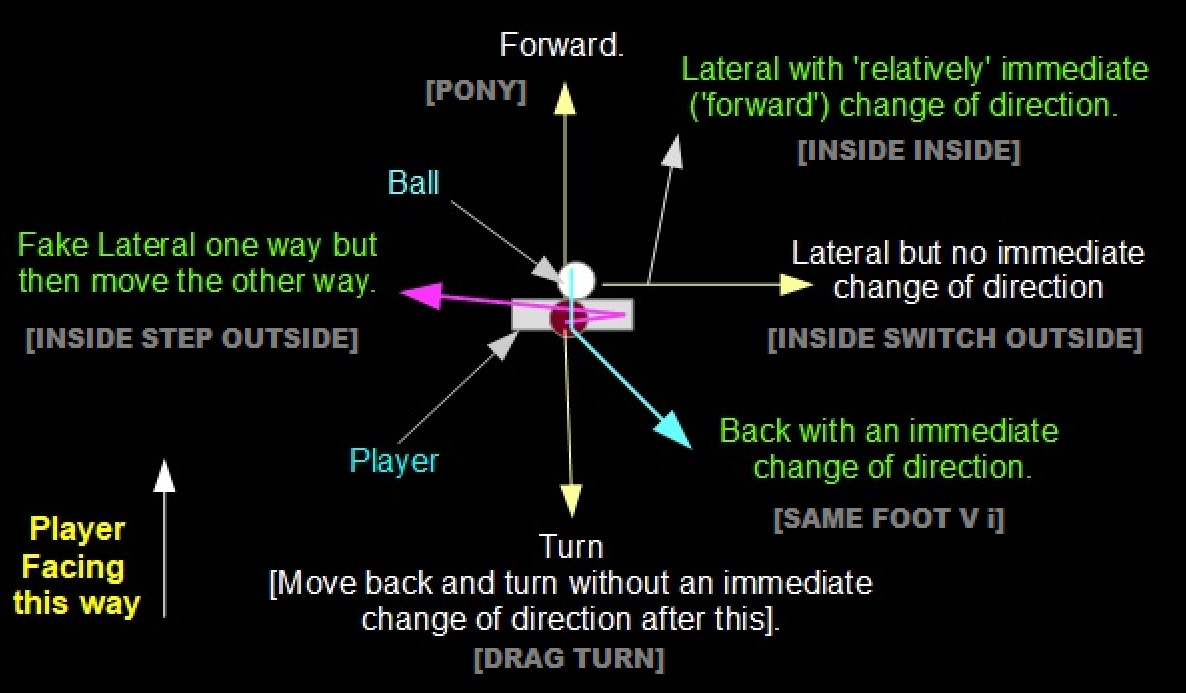Session Foundations
Underlying Foundations : # 1 :
The session title pretty much spells out the essence of the session.
- 1.10-2.10 pm : Technical Introduction Sessions : Build a relationship with the ball and get a basic understanding of the game at a simple technical level.
- 2.15 - 3.40 pm : Footwork Acquisition Phase and Intensity: Introducing and developing Fundamental Footwork Patterns and their application in games.
- 3.45 - 5.15 PM : Move onto the ball, receive, Footwork, Pass, Move out of the ball all at high intensity sessions : Pushing the ability to execute Fundamental Footwork Patterns at an increasing intensity, when under ore pressure and with a greater dexterity of touch.
Underlying Foundations : # 2 :
The 1.10 session is significantly different to the other 2 sessions.
For everything you need to know and do in regards to the 1.10 session click here:
[Use the model session as an example of what is expected to be covered in a session. You can run a different type of sessions but the ingredients must be the same].
Underlying Foundations : # 3 :
2.10 session : Introducing and developing Fundamental Footwork Patterns and their application in games.
To understand FFPs you need to understand this model
The Basic Standard Footwork Model

In the 2.15 and 3.45 session the first and most important aspect of the sessions is
footwork development
BUT we also need to include
foot speed, basic agility and intensity incorporated into the footwork.
2.15/3.45 is in 3 parts
Part 1 : In this section you need to work on 6 patterns (i use a standard 6 [TFT Web-book 1 Chapter 5] - but you are free to use other patterns that achieve the same thing) that achieve one of the 6 relative ball moving options above.
In each session cover :
6 different patterns that achieve slightly different things - in accordance with the model above.
You can use the options in
Or use other alternatives (but they must fit into the model).
[Register and then subscribe to TST to access the TFT Individual game functional technique web-book series].
[ It is expected all coaches do this to ensure they have all the up to date info about the TST footwork development model].
So
- 2.15 session: First and main aim at 2.15 is to introduce and 6 develop patterns. however.....
- Intensity, foot speed on and off the ball, movement into and out of the ball, and basic agility needs to be incorporated too.
- 3.45 session - is not about doing anything new - but more about the process of
- receive, footwork, pass, move.....PLUS
- Intensity, foot speed on and off the ball, movement into and out of the ball, and basic agility needs to be incorporated too.
Part 2:
- The tech games must firstly bring the 6 patterns introduced the opportunity to be used in a game (that is play games where the game functional patterns, in all 6 relative directions, need to be used).
- In the games, it is not about the exact patterns, but more about did they make a good decision in regards to the footwork used, and the solution selected.
- What games can the players play which offer them opportunities to correctly select and execute a footwork patterns to solve a problem.
- This section is where the head gets up, good vision and awareness and decision making is critical.
- They can be 1 v 1 or 2 v 1 or 2 v 2 games (but not 3 v 3 games as these are played next)
Part 3
- Play the promo/relegation 3 v 3 - all groups come together.
For more details on the above (and for the 3.45 session - click on this link.
Underlying Foundations : # 4
3.45 session : Part 1 has more and more game elements included
Add to FFP development. The FFPs should be good in isolation and done smoothly.
- FFPs become part of the
- Receive, execute FFP, pass, move, repeat process
- Intensity (quick feet particularly into on and out of the ball,
- not just about hard work0.
- Operating with the Head up more and more
- Don't complicate FFPs - jusy increase the speed that FFPs are done at
Tech games ;
- Should be 2 v 1 and 2 v 2 games based as much as possible......